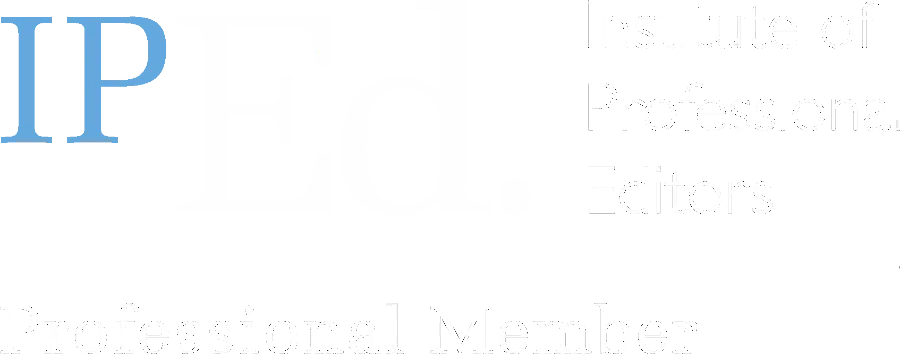Free AI Proofreading: Why Human Proofreading Services Are Essential for Accurate Academic Manuscripts
When it comes to proofreading English in a manuscript, there
are many options available to writers. One choice is to use an AI proofreading
service, which are often cheaper or even free. However, while AI proofreading
services may seem like a cheap and attractive option, it’s better to use a
human proofreading service instead for important writing such as academic
manuscripts.
In this article, we will explore the advantages of using a
human proofreading service to correct an academic manuscript.
- A
Human Proofreader Can Understand the Context of Your Work
One of the main drawbacks of using an AI proofreading
service is that it does not have the ability to understand the context of your
work. This means that it may make incorrect corrections or suggest changes that
are not appropriate for your particular field or subject matter.
A human proofreader, on the other hand, will have a much
better understanding of the context of your work. They will be able to identify
and correct errors that are specific to your field or subject matter, ensuring
that your manuscript is accurate and error-free.

For good or otherwise, AI will be the industrial revolution of our generation. But it’s not quite there yet.
- A
Human Proofreader Can Identify and Correct More Errors
While AI proofreading services are getting better at
identifying and correcting errors, they still cannot match the accuracy and
attention to detail of a human proofreader. A human proofreader can identify
and correct more errors than an AI proofreading service, ensuring that your
manuscript is of the highest quality.
Human proofreaders can pick up on things like spelling and
grammatical errors, punctuation mistakes, and inconsistencies in tone or style
that AI is still not able to catch. They can also help to ensure that your
manuscript is well-organized and flows smoothly overall.
One popular AI proofreading tool provides an example paragraph
to demonstrate their platform, shown in the below screenshot. The first two sentences are:
‘The article was written on 1984.
It was about this experiments that were carried out on some isolated village.’
The AI tool picks up on two mistakes, correcting this to:
‘The article was written
However, an experienced human editor might have
corrected this sentence more thoroughly to something like:
‘The article was written
This is a significant improvement from the original sentence.
The style is now more appropriate for written English, with a less
conversational tone. By making the two sentences more concise the editor has also
been able to combine them into one sentence with two short clauses, making it faster
and easier to read. Corrections at this level are not yet possible by AI.

An screenshot from an advanced proofreading tool that is excellent and quite impressive, but cannot yet compete with human proofreaders.
- A
Human Proofreader Can Provide Feedback and Suggestions for Improvement
Another advantage of using a human proofreading service is
that they can provide feedback and suggestions for improvement. This can be
invaluable for academic writers who are looking to improve their work and get
it published.
A human proofreader can provide feedback on things like the
structure and organization of your manuscript, the clarity and coherence of
your arguments, and the effectiveness of your writing style. They can also
suggest ways to improve your writing, such as by using more specific language,
avoiding repetition, or using more varied sentence structures.
This is even more important in academic writing, as they can
also let you know if your writing has issues such as missing references, mismatched
figure numbers and other inconsistencies that an AI cannot yet detect.
- A
Human Proofreading Service Can Provide a Certificate of Editing
Having a certificate of editing to prove that a manuscript
has been proofread provides a level of credibility and assurance to potential
readers, publishers, and academic institutions.
It serves as evidence that the manuscript has been carefully
reviewed and edited by a qualified professional, giving readers confidence in
the quality and accuracy of the work. Additionally, a certificate of editing
can help authors demonstrate their commitment to producing high-quality writing
and their adherence to professional standards.
At the time of writing, no AI proofreading tool is advanced
enough to compete with the quality of experienced human editors and there is no
AI proofreading service that provides a certificate of editing.
- A
Human Proofreader Can Ensure Your Manuscript Meets Academic Standards
Finally, a human proofreader can ensure that your manuscript
meets the high standards required for academic writing. This includes things
like ensuring that your manuscript is free of plagiarism, that it adheres to
the style guidelines of your particular field, and that it is written in a
clear and concise manner.
Using an AI proofreading service may be a convenient and
cost-effective option, but when it comes to proofreading an academic
manuscript, there really is no substitute for a human proofreader. A human
proofreader can provide the attention to detail, context-specific knowledge,
and feedback and suggestions for improvement that are essential for producing
high-quality academic writing.
Summary
In conclusion, when it comes to proofreading an academic
manuscript, opting for a human proofreading service over an AI proofreading
service is the way to go. The benefits of having a human proofreader who can
understand the context of your work, identify and correct more errors, provide
feedback and suggestions for improvement, provide a certificate of editing, and
ensure your manuscript meets academic standards far outweigh the potential cost
savings of using an AI tool. By investing in a human proofreading service, you
are investing in the quality and credibility of your work, and setting yourself
up for success in the competitive world of academia.
All that being said, at Eneo we recognise the promise that
AI based proofreading holds in the future. We hope to later offer free AI based
proofreading, with paid human proofreading of the resulting manuscript at a
lower cost. It’s certainly an exciting future for writing and translation—but
the future isn’t quite here yet!

